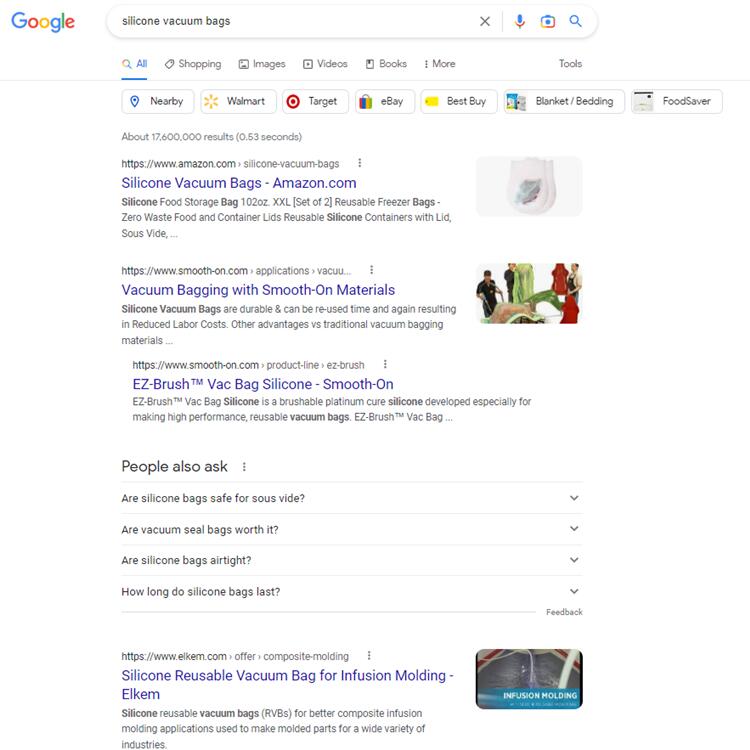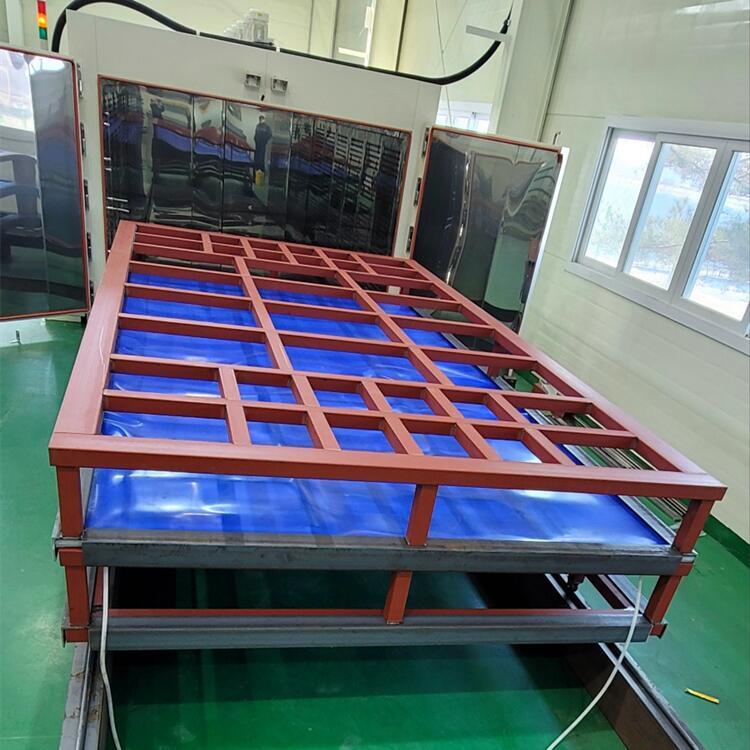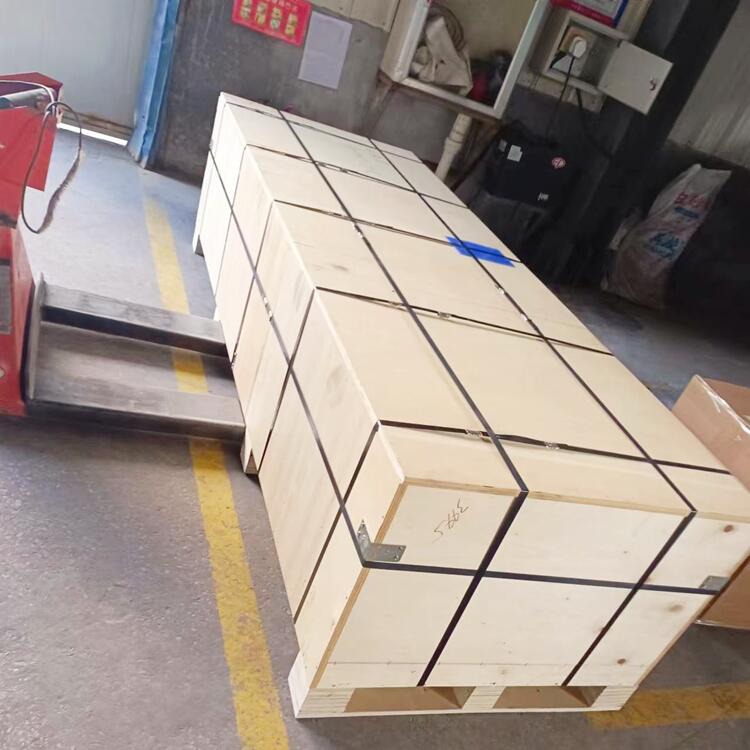Well, If you are working in the laminated glass industries, when you search for the keyword “silicone vacuum bags” on Google.com, maybe the top organic and paid results are not meeting your search intentions.

Why?
The main reason is because of the popularity of “silicone vacuum seal bag” and some large companies’ expertise in SEO optimization. The search process consumes a lot of your time, but you get no gain.
Let’s think of something else. It seems we can do it in another way, just input the long tail keyword “silicone vacuum bags for laminated glass”. Here is what you want to get.

Today I’m going to share bits of knowledge you might not know or something is easy to ignore about vacuum lamination bags of silicone.
Especially, we present an in-depth guide that works GREAT in 2023 about a vacuum silicone bag. We also provide some specific cases to help you get full details of the bag.
What is Silicone Vacuum Bag?
In the realm of the glass lamination industry, a silicone vacuum bag comprises four key components: two layers of high-temperature resistant silicone rubber sheets, sealing strips, vacuum nozzles, and silicone tubes.
All pieces are bonded together with a special glue for maximum adhesive strength. The bag attaches to a vacuum pump through the tubes and creates an airtight sealed room to make safety laminated glass.

Silicone vacuum bags have become a crucial part of the production process in the glass lamination field.
Next, I’ll give a detailed description of every component step by step and provide some useful tips.
Top Layer and Bottom Layer

Industry terms:
Top layer = Top pad = Upper layer
Bottom layer = Base pad = Lower layer
Silicone Rubber Sheets
A layer of silicone rubber sheet is made of tear-resistant silicone rubber that is highly flexible, durable and heat resistant. It is often used in glass lamination machines as a reusable vacuum chamber because of its impressive resilience and high temperature tolerance.
Technical data for your reference is as follows:
| Density | 1.25 ± 0.05g/cm3 |
| Hardness | 50 ± 5 Shore A |
| Tensile strength | 9.5MPa |
| Tear strength | 32N/mm |
| Elongation | 650% |
| Temperature | -60°C~250°C |
Remarks:
This kind of superior silicone rubber sheet is not a good alternative to vacuum press membranes for woodworking and thermoforming industries.
Colors
Obviously, the color never affects normal usage in laminating glass production. At present, two common colors available from our factory are transparent and blue. Actually, some professionals also regard transparent color as translucent or white color. Different colors are only used to distinguish different suppliers.
| Blue Color | Transparent Color |
However, there has been an increase in customers who are opting for blue silicone bags over other shades in recent days.
Surfaces

The surface is “the outer side smooth, the inner side textured”. The textured side has a fabric impression and is often used as working layer. It is commonly believed that the rough finish can be easily glued together with silicon sealing strips.
Notes:
During the unfolding and closing, please avoid any sharp objects puncturing and scratching the surfaces.
Thickness
The common thickness is 3mm preferred. This is the standard for our industry. But for some special requests about thickness 2mm or 1mm, please let us know in advance, and then we will have to recommend higher tear strength silicone rubber sheets as top and base pads.
How about thickness 4mm?
That means we gotta start new production for thickness 4mm silicone rubber sheet. In these years, only a customer from Morocco ever purchased 20 pockets with 4mm X 2150mm X 3650mm vacuum bags of silicone from us.
Dimensions
It is Width * Length, which simply means the bag’s external size.

As a general rule, customers tell us a size first, such as 2400mm * 4400mm. By default, we regard it as the outer size; so the real working area will be smaller than 2400mm * 4400mm.
- The bag’s working area is roomy enough to fit the maximum glass width and length with plenty of space to spare.
- The bag is a smaller item compared to the tray, and it is inserted into a glass laminating machine.
For example, below is a case from one of our Korean customers. Make sure the shelf and the machine both have enough room to accommodate this bag (the outer size is 2000mm * 3700mm).

Vacuum Suction Nozzles
It is an air extraction valve to generate the vacuum in the laminating bag.
Nozzles’ Material – Silicone Nozzle or Metal?

Typically, we supply a bag with silicone nozzles as part of the standard assembly process, unless a specific request is made.
Does your project require metal nozzles? If so, we can provide them with an additional cost.
| Inner View | Outer View |
On the Top Pad or Base Pad?
Normally we do not take this into account. Because for a bag with E-seals on the four edges, the two layers can be interchanged. What you should do is to flip it over and fasten the sealing strip in the right direction.
On the Long Side or the Short Side?
This depends mainly on the type of glass lamination machine used and the operating environment. When selecting more vacuum nozzles for purchase, make sure to check the ports on either the long side or the short side of the bag to ensure you get the right fit.
Where Should a Port be Placed?
Usually, the port should be located 12-15 cm away from the inner side of the sealing strip. However, if you would like to have your port installed in a different spot, such as the center of the bag, please inform us prior to installation.
But for a bag with U-seals, you gotta advise the nozzles’ location first. That’s a very important element here.
For instance, below shows the drawing and its usage scenario from a customer in Kazakhstan, who is using our bag with 3mm X 2400mm X 4400mm.


The two vacuum nozzles (12mm/6mm) are on the top pad and on the long side.
Remarks:
The nozzles’ location is a very important element you should consider before ordering glass lamination bags.
Vacuum Suction Hoses (Tubes/Pipes)
Vacuum tubes are the bridge linking the bag with the vacuum machine.

It is commonly chosen from below diameters.
| Items | Inner Diameter (ID) | Outer Diameter (OD) |
| Nozzle 1 | 6mm | 12mm |
| Nozzle 2 | 9mm | 17mm |
| Nozzle 3 | 10mm | 20mm |
- 70%-80% of customers prefer OD-12mm and ID-6mm vacuum silicone tube.
- 20%-30% of customers ever choose OD-20mm and ID-10mm silicone pipe.
A Vacuum Suction Hose in Length?
The standard size for each silicone tube is 2 meters long, but it can also be tailored according to specific lengths, such as 3M, 5M, and so on.
Silicone Sealing Strips
E-seals or U-seals for the Four Edges?
 | |
| E Seals | U Seals |
That’s really a good question. At Deer Hunter, we offer both E-seal and U-seal bags to customers. But based on our historical case studies, the vast majority (90%) of our customers tend to opt for E-seals as their go-to choice.
What is the Difference?

U-seal bags are specially modified and offer an easier way to open and close thinner laminated glass compared to regular E-seal bags. This is due to the modified edges and corners which provide a smoother sealing experience. However, it still comes down to personal preference whether you choose U-seal or regular seal bags.

E-seal vacuum bags are especially suitable for thicker or curved laminated glass due to their superior air tightness.
PTFE Open Mesh
The PTFE open mesh sheet in stronger double weft and warp is the ideal tool to help to vacuum during the production of laminated safety glass. Because of the open mesh sheet withstanding high temperature resistance and anti-corrosive property, it offers quick releasing and protects reusable laminating vacuum bags from breaking by the sharp corner of the glass. To some extent, it is keeping the bag last for long life. At the same time, mesh holes are for quick air movement during vacuuming.

Precautions:
1: Normally mesh hole is 4mm*4mm and any size (maximum width * length) can be customized according to different machines.
2: Technical data as below:
| Weight | 580g/m2 (17.1 oz/sq yd) |
| Tensile Strength (warp) | 560 N/cm (331 lbs/inches) |
| Tensile Strength (weft) | 316 N/cm (181 lbs/inches) |
| Temperature Resistance | -73-315℃ (-100-600℉) |
3: Bending is not recommended during transport; so it is often wrapped in rolls like this.
4: The four sides do not need to paste cloth.
5: Although it is not an integral part of the vacuum bag, it is an indispensable accessory in the laminating glass process.
How to Calculate the Actual Weight of a Vacuum Bag?
To calculate the actual weight of a laminating vacuum bag, you need to take into account of all components. You gotta know the size of your silicone sheets and silicone sealing strips first by measuring their thickness, width and length; because here we can ignore the weight of the hoses and the nozzles.
For example, for a bag with 3mm * 2.4M * 4.4M external size, the calculation formula is:
1.3g/cm3 * 3mm * 2.4M * 4.4M * 2layers = 82.37kg
(2.4M+4.4M) * 2 * 2layers * 0.5kg/M = 13.6kg
So N.W. for this bag is about 96kgs (82.37 + 13.6)
The calculation process is a little bit interesting, for the variables are length and width only, and you can contact us if you have any doubts.
Packaging and Shipping
What are the Package Details?
By preliminary weight calculation above, we can give you advice on packaging and shipping.
 | ||
| (1) Folding the bags | (2) Packed into woven bags | (3) Placed inside wooden cases |
Our professional workers artfully fold the bags into woven bags for extra protection during shipment. Additionally, to help ensure that wear and tear are kept at a minimum, carton boxes or wooden cases can be provided, dependent on customer need.
Below you can see a wooden case including 6 sets & 3mm X 2400mm X 4400mm Blue Vacuum Silicone Bags.

Case size: 255 * 103 * 78cm
G.W.: 675kgs
How About the Shipment?
Shipment depends on your final size and quantity.
- If the quantity is 1-2 sets and the total weight is less than 150kgs, air transportation is the first choice. DHL, UPS, TNT and FedEx are the common shipping modes with door-to-door service. However, sometimes you gotta pay some customs taxes before their delivery. This mainly depends on your local customs policies and regulations.
- If the quantity is over 3 sets and the total weight is over 200kgs, either by sea or by train(truck) is a good choice. The advantage is that the cost is very low, but the shipping time is relatively long. As the transportation industry grows, many freight forwarders can provide DDP (Delivered Duty Paid) services.
How Does a Bag Work in the Laminating Glass Furnace?
When you are using a vacuum silicone bag for laminating glass, you will want to make sure that you are following the SOP for the job. The right bag will ensure that your product is sealed properly, and it will also be able to handle the heat of your process.

(1) Glass sheets with insert EVA interlayer films are placed inside the lower part of the bag. Please put PTFE mesh as the bottom surface in advance, which forms a protective layer around the glass.
(2) The top of the bag is put on from above and by pressing the interlocking sealing edges an airtight connection of the two parts is produced.
(3) Once sealed, it’s then placed inside the oven and vacuumed ahead of heating.
(4) Depending on the glass thickness it takes 3 to 4 hours to go through the heating cycle. Here you gotta consult with your EVA film and machine supplier about the detailed process.
(5) The formed laminated glass is left to cool and taken out of the bag later on.
Below video from YouTube.com will help you get a full understanding.
Conclusion: How to Order?
After reading the above content, we believe you have got a comprehensive understanding of our silicone vacuum bags.
Are you ready to purchase it now? Following the below 5 steps can make a buyer’s journey easy and quick.
1: Advise the external size of the bag and its quantity;
2: The nozzle’s quantity and position(top or base pad? the long side or the short side?);
3: Each tube’s diameter and length (2M, 3M, 5M or customized)?
4: E seals or U seals?
5: Also need PTFE open mesh or not?
Now, it’s your turn. I want to hear from you.
What do you think of this guide about silicone vacuum bags?
Or maybe I missed something useful you want to know.
Either way, If you still have any questions about our silicone vacuum bags, you can send messages through the right table sheet. Just contact us via mobile/WhatsApp number +86-13823789007, or email us at sales@cndeerhunter.com
After all, sharing things with others makes us all HAPPY!
To be continued.



